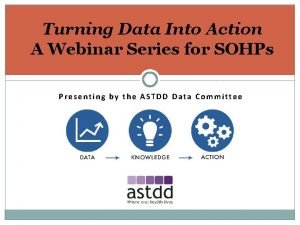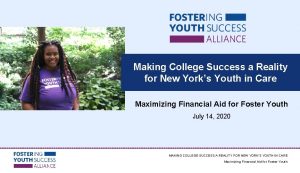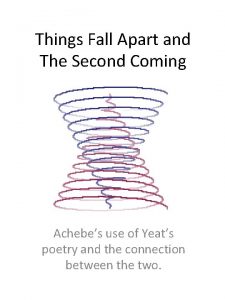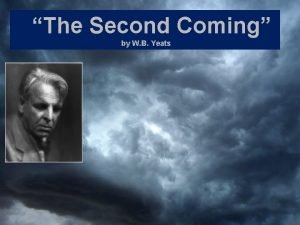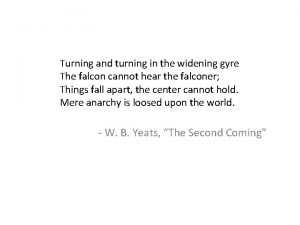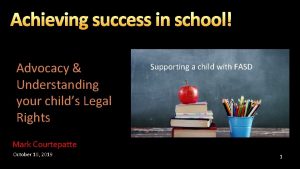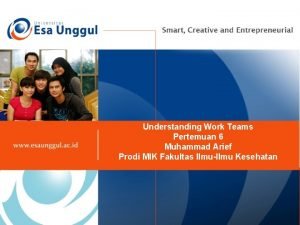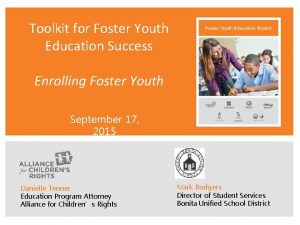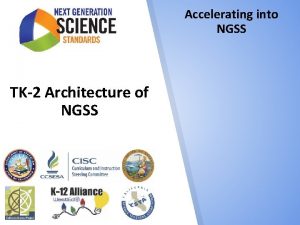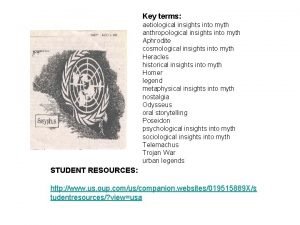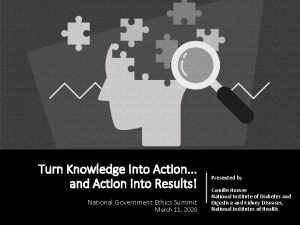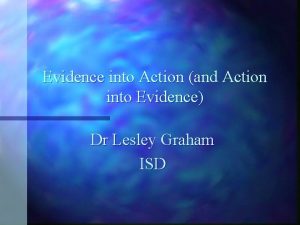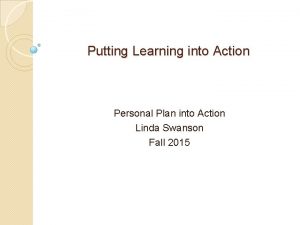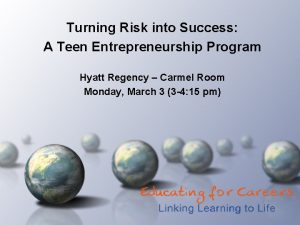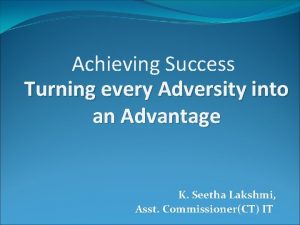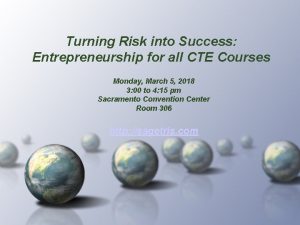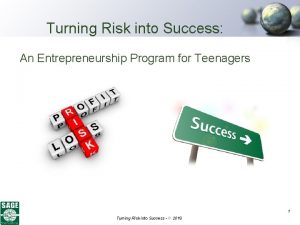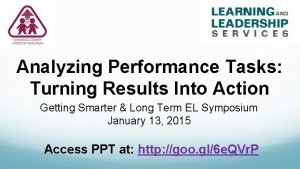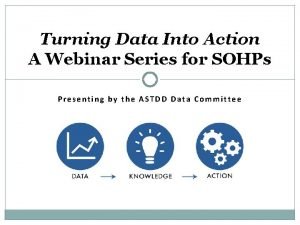ACCELERATING SUCCESS Turning Insights into Action for Foster




























- Slides: 28

ACCELERATING SUCCESS: Turning Insights into Action for Foster Youth at California Community Colleges – October 16, 2017 April Allen, Ph. D. Vice President of Innovation and Strategy Ken Sorey Executive Vice President

ACKNOWLEDGEMENTS Funders: Consulting Partners: • John Burton Advocates for Youth - Debbie Raucher • Mark Courtney - Chapin Hall • Stuart Foundation - Alexia Everett • Nathanael Okpych - University • May and Stanley Smith Charitable Trust - Elisabeth Cutler of Connecticut School of Social Work • Marcled Foundation • Walter S. Johnson Foundation • Pritzker Foster Care Initiative A special thanks to the California Community College Chancellor’s Office

ACKNOWLEDGEMENTS Bright Spot Campuses: • College of the Canyons • De Anza College • Evergreen Valley College • Fresno City College • Los Medanos College • Reedley College

CALIFORNIA COLLEGE PATHWAYS POLICY MILESTONES • Early 2000’s, Guardian Scholars, foster youth success initiative • In 2006, the Community College Chancellors Office launched the Foster Youth Success Initiative • In 2015, Senate Bill 1023 created CAFYES, a dedicated source of state funds for supporting foster youth at up to 10 community college districts

BUILDING ON WHAT WE LEARNED • Charting the Course (2015)

METHODOLOGY • Quantitative data from Cal-PASS Plus • A survey of institutional policies and foster youth programs • A multi-method analysis to identify bright spot colleges through data • Qualitative interviews to uncover promising practices

EQUIP

FOSTER YOUTH DEMOGRAPHICS

STUDENTS WHO START IN DEVELOPMENTAL ED.

PREPARING FOSTER YOUTH FOR COLLEGE • Staff assist students with paperwork and questions regarding financial aid • Evergreen Valley College -- accompany students to the financial aid office • Reedley College -- on-campus housing, foster youth have priority status • Fresno City College -- collaborates with community partners for foster youth housing

EQUIPPING FACULTY AND STAFF • College of the Canyons and Los Medanos provide training for faculty to understand the needs of foster youth and other vulnerable populations • General training on trauma and behavior intervention and integration of social-emotional learning in the classroom • Informing instructors about the needs of foster youth enhances academic experience and educational success

ENROLL

COURSE ATTEMPTS • FY on average attempt few credits at all levels than non-foster youth • FY enroll full-time at comparable rates as other students – yet low percentages

TERM-TO-TERM PERSISTENCE

PATHWAYS TO FOSTER YOUTH PERSISTENCE • Standard high school diploma was the most important factor for term-to-term persistence • For foster youth without a standard diploma, declaring an academic goal was associated with a 13% increase in persistence

FACILITATING PERSISTENCE WITH SOCIAL SUPPORTS • Ensure uninterrupted contact with foster youth • Reedley College – sends text messages to foster youth about workshops, deadlines or to just stay connected • Mental health counseling, peer support groups, and life skills workshops have proven to be beneficial • Bright spot colleges described a higher intensity or greater availability of these services

EARN

CREDITS EARNED

MATH AND ENGLISH COMPLETION

MATH AND ENGLISH COMPLETION

MATH AND ENGLISH COMPLETION • Foster youth complete transfer level English in their first year at substantially lower rates than non-foster youth • Large disparities exist for certain groups of foster youth

MATH AND ENGLISH COMPLETION • Noticeable differences in course success rates among different ethnic groups

PROMISING PRACTICES TO SUPPORT 30 -CREDIT COMPLETION

INSTITUTIONAL AND PROGRAM FACTORS THAT PREDICT 30 -CREDIT COMPLETION

PATHWAYS TO COMPLETION • Foster Youth who took a math and English course in the first two years increased their likelihood of completing college by 7% • Declaring an Ed. Goal in addition to math and English only slightly increased completion

DISCUSSION • The educational experience of racial minority foster youth gives cause for concern • Further exploration of differentiated Asian-American groups should be explored • Persistence after the first year of college was influenced by receiving a standard high school diploma • Number of high schools attended by foster youth influenced their academic outcomes • Taking a math or English course in the first year was the strongest predictor of student success • Multiple measures on many colleges is beginning to reduce underplacement of students into courses.

LIMITATIONS • Foster youth were identified via self-identification and financial aid application • The analyses presented do not control for length or intensity of a students experience in foster care • This report does not evaluate the causal relationship between specific foster youth programs and student outcomes • This analysis was limited to foster youth in California

NEXT STEPS • Further data matching and analysis are needed between K-12 school districts and community colleges • Future work should cross-reference community college and child welfare • Triangulated findings from quantitative analysis and qualitative interviews warranted highlighting promising practices of higherperforming programs • Listening directly to foster youth regarding their experiences would bolster identification of challenges and promising practices • Analyzing the fourth “E” (Embark) when enough time has lapsed will illuminate the connection between post-secondary education and the labor market/economic well-being
 Data into action
Data into action Foster youth college success initiative
Foster youth college success initiative The second coming and things fall apart
The second coming and things fall apart Blood-dimmed tide meaning
Blood-dimmed tide meaning Turning and turning in the widening gyre
Turning and turning in the widening gyre Accelerating rate calorimeter
Accelerating rate calorimeter Law of accelerating returns
Law of accelerating returns 50000x200
50000x200 Accelerated implementation methodology
Accelerated implementation methodology Accelerating high performance
Accelerating high performance Advanced materials
Advanced materials Your child's success or lack of success
Your child's success or lack of success Your child's success or lack of success
Your child's success or lack of success Turning great strategy into great performance
Turning great strategy into great performance Turning lemons into lemonade quotes
Turning lemons into lemonade quotes Turning individuals into team players
Turning individuals into team players Turning vision into reality make in india
Turning vision into reality make in india Is a sparkler a chemical or physical change
Is a sparkler a chemical or physical change How to turn an essay into a speech
How to turn an essay into a speech Fspos
Fspos Novell typiska drag
Novell typiska drag Nationell inriktning för artificiell intelligens
Nationell inriktning för artificiell intelligens Returpilarna
Returpilarna Varför kallas perioden 1918-1939 för mellankrigstiden
Varför kallas perioden 1918-1939 för mellankrigstiden En lathund för arbete med kontinuitetshantering
En lathund för arbete med kontinuitetshantering Särskild löneskatt för pensionskostnader
Särskild löneskatt för pensionskostnader Vilotidsbok
Vilotidsbok Sura för anatom
Sura för anatom Förklara densitet för barn
Förklara densitet för barn
